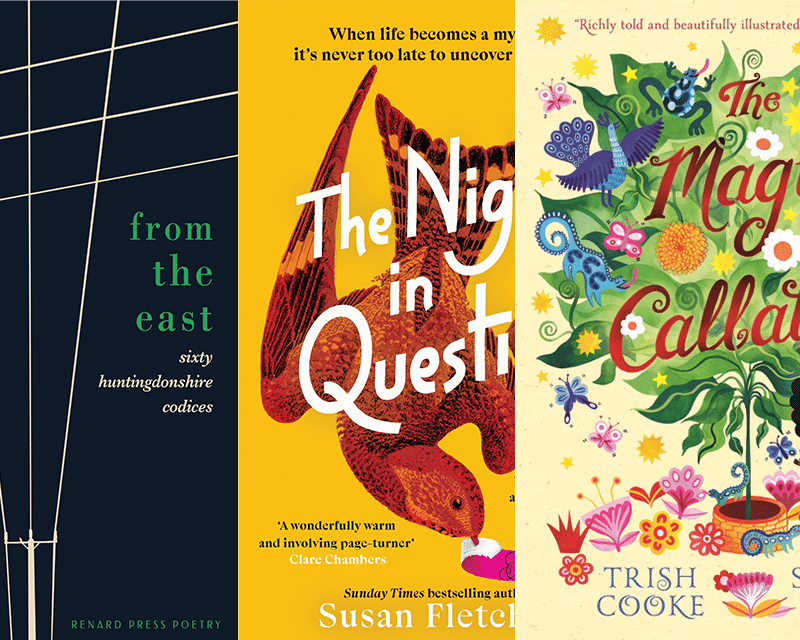- Collected
- Article
Finding Consolation In Catastrophe
How researching a novel offered an escape from the pandemic

- 14 December, 2020
- Christina Koning
When the pandemic began, I had just finished a novel, and sent it off to my agent — a reason, one might suppose, for modest rejoicing. With the March lockdown following close behind – and the ensuing cancellation of the London Book Fair – rejoicing was no longer an option. In common with the other creative industries, publishing had fallen into a black hole, from which it seemed unlikely to emerge any time soon. Like everybody else, I found myself stranded in a strange limbo. The only possibility of escape was to carry on writing, regardless of whether anything I wrote would ever see the light of day.
In the months that have followed, this situation has only become more evident, as publishers find themselves overwhelmed with submissions and a backlog of books awaiting publication. With the prospects for writers looking so gloomy in the foreseeable future, one might be justified in asking oneself what the point of it all is, and whether writing for publication isn’t just an enormous waste of time. Fortunately, the experience of the past eight months has made me see that not only is writing essential for maintaining one’s sanity in difficult times, but that living through a pandemic can offer invaluable insights into what life must have been like for people in the past who had to endure similarly challenging conditions. The novel on which I’m currently working, the latest in a series of detective stories, is set in wartime London, in which nightly bombing raids, rationing and blackouts offer a salutary reminder that ours isn’t the only time people have had to endure extreme circumstances.
Between 7th September 1940 and 11th May 1941, a bombing campaign by the Luftwaffe – called the Blitz (‘lightning’) – was carried out on fifty-seven consecutive days and nights. London was the main target, although the bombing later spread to other major cities across the UK. More than 40,000 civilians died, and a million homes were destroyed. It is a sobering fact that, over roughly the same eight-month period, the UK has already lost more than 60,000 people with coronavirus. Different as these two catastrophes might be in all kinds of ways, they are alike in one respect: one has to put up with them. ‘Keep calm and carry on’ is as necessary for us as it was for the war generation.
The act of imagining what it was like for those near-contemporaries, as they had to undergo trials and privations equal to or greater than those we are now experiencing, has been a strangely reassuring one. My chosen ‘escape’ from present reality has made me think very hard about the way that people in the past dealt with catastrophe, and how some, if not all, managed to come through it. Present circumstances have meant that I haven’t been able to research the book in the way I have done with previous novels — by visiting the places where it is set (even London, the setting of the latest book, is currently out of bounds to me). Earlier novels in the series have taken me to Berlin, Barcelona, and Cornwall; these, too, are out of my reach, as is researching in libraries— most recently the London Library, where I used to spend hours reading archive copies of The Times, in order to get a sense of the period detail of the nineteen-thirties.
So I’ve had to resort to what is, after all, a writer’s most important resource: books.
As my novel is a detective story, it’s obviously to the crime fiction of the era that I’ve turned first of all: works such as Anthony Gilbert’s 1943 thriller, Death in the Blackout, featuring his ironically named solicitor-turned-sleuth, Mr Crook:
A bomb had fallen in the middle of the road not far off, and windows and their sashes were splintered in all directions. Crook tipped his common brown bowler and said cheerfully, “Nice work.”
Or there’s E.C.R. Lorac’s Murder by Matchlight (1945), in which the hero, Bruce Mallaig, overhears what turns out to be a murder, whilst wandering around Regent’s Park in the blackout:
It was a very dark night. “If I didn’t know exactly where I was, damn it, I might be anywhere,” he said to himself.
Both these murder mysteries, just two of many that were published during and immediately after the Second World War, combine a satisfying degree of suspense with precise details about what London in wartime was like. But while the detective stories of these and more well-known practitioners such as Agatha Christie, Margery Allingham and Dorothy L. Sayers might appear to be all the inspiration one needed to write a novel of this kind, it’s the literary fiction of the period which has given me as much, if not more, insight into the lives of men and women in war-torn Europe.
Novels such as Elizabeth Bowen’s The Heat of the Day (1949), in which the action takes place between 1942 and 1944 — focusing on Stella Rodney, who works for the government, as she comes to realise that her lover may be a Nazi traitor. The novel’s atmosphere of paranoia and suspicion is conveyed with devastating economy — as in the following passage, in which Stella confronts her nemesis, an MI5 operative, who is in love with her:
‘You sounded rattled when we talked on the phone.’ ‘You ring up like the Gestapo,’ she said with a laugh or a yawn. ‘That would be just the impression I’d hate to give you. — Then, you haven’t a thing in the world to be frightened of.’ ‘Who would dare say that these days?’
The mood of Henry Green’s 1943 novel, Caught, is also one of nerve-jangling tension, as Roe, a widower with a young son, confronts the fellow Fire Officer whose sister once abducted the child. Green, who himself worked for the Auxiliary Fire Service during the war, brilliantly evokes what London during the Blitz was like, as in this description:
Two thirty-foot high sprays or fans of flame lit the face of ornate hotel buildings, or what may have been the east and west sides of a vast block of flats fronting these two streets, and illuminated them so well that, at the distance, he was able to pick out details of brickwork and stone facings…
Similarly precise and atmospheric details can be found in Penelope Fitzgerald’s Human Voices, published in 1980, which described the author’s experience of working at the BBC during the war:
After the first week of September London became every morning a somewhat stranger place. The early morning sound was always of glass being scraped off the pavement. The brush hissed and scraped, the glass chattered, tinkled, and fell.
Another snapshot of what must have been a familiar wartime scene, is to be found in Elizabeth Taylor’s 1945 novel, At Mrs Lippincote’s:
Julia stopped by a café where soldiers stood by a counter drinking tea from an urn. She went in. The peculiarly sour smell of khaki nauseated her…
And this is Graham Greene’s no less visceral take on what being in the middle of a bombing raid felt like, from his 1943 novel, The Ministry of Fear:
Then a whine began, came down towards them like something aimed quite deliberately at this one insignificant building. But the bomb burst half a mile away: you could feel the ground dent.
Finally, there’s Bowen’s 1944 short story, ‘Mysterious Kôr’, with its electrifying opening description:
Full moonlight drenched the city and searched it; there was not a niche left to stand in. The effect was remorseless: London looked like the moon’s capital — shallow, cratered, extinct.
The moonlight is ‘remorseless’ because it exposes the city and its sleeping inhabitants to the dangers of aerial bombardment, rendering the blackout futile. In his introduction to the Penguin edition of her Collected Stories, Angus Wilson praised Bowen’s ‘acute perceptions of the first impact of ever present danger and death upon a great city.’ It’s a comment which might also apply to our own anxious times.
We don’t read fiction for a dry, factual account of what human beings were like at a certain period in history, but for something more: a sense of what we, as twenty-first century readers, share with them — as well as what we do not. With the insights offered by these, and other books (not all of them fiction), I found myself becoming increasingly familiar with this era of the past. It struck me as I did so that all these writers had lived through what they were describing, at a time when survival – their own and that of their loved ones – was far from certain. I took courage from this, and was able to look at my own situation with greater equanimity. Suddenly, whether my latest novel found a publisher or not seemed of less importance than having got through another day…or week…or month, as all of us have been trying to do. I felt very privileged to have resources at my disposal – books, music, paints, green space – so that being in lockdown, though often sadly lacking in human contact, has allowed me to continue doing what I have always done, which is to create my own reality. It has made me realise that writing, far from being a frivolous or pointless activity, is an essential part of my life — a way both of connecting with the world, and of trying to understand it.
You might also like:
No facts, only versions
Memoirs are as much about what is excluded as what is included. This edition examines how you can evoke the…
RLF Fellows’ News: April 2024
Publishing News RLF Fellow Trish Cooke’s new children’s book, The Magic Callaloo, is set to be published by Walker Books…
Susan Fletcher on outsiders in fiction – literal and imagined
I’ve always known that I’ve preferred to be outside. To be an outsider – literally, and, specifically, amongst wild places…


